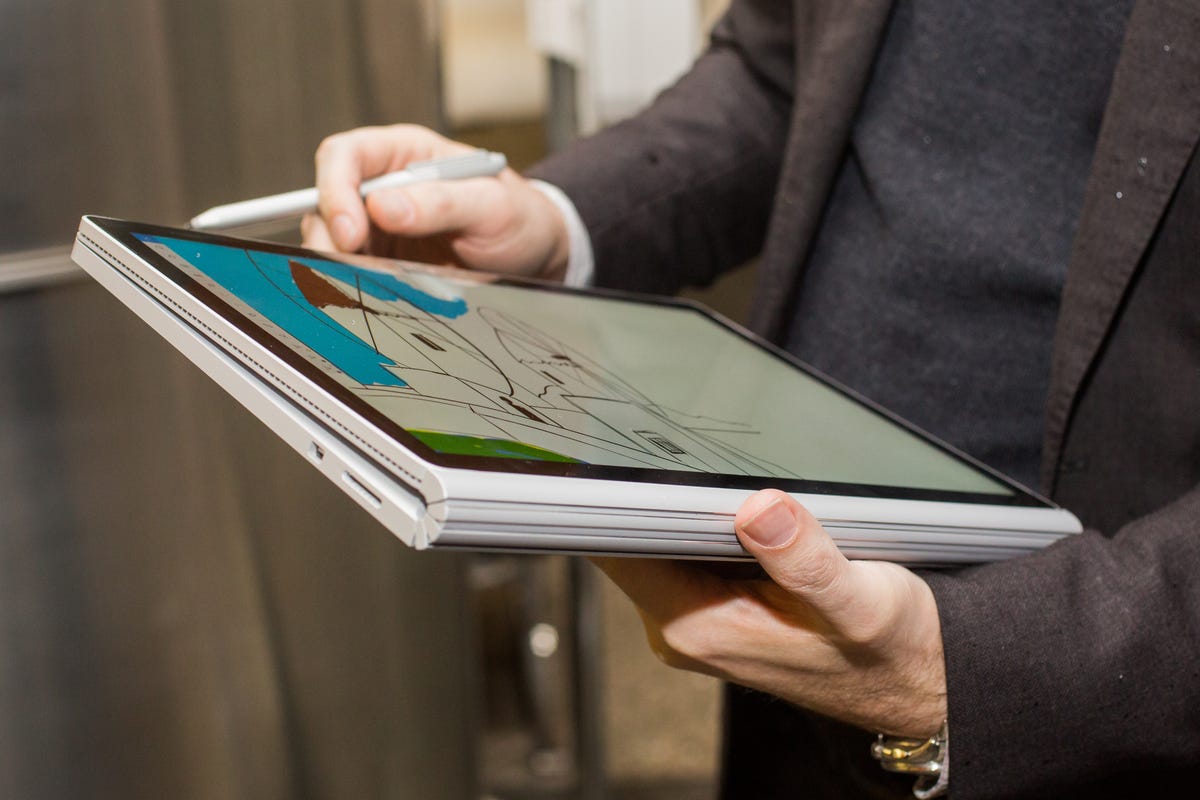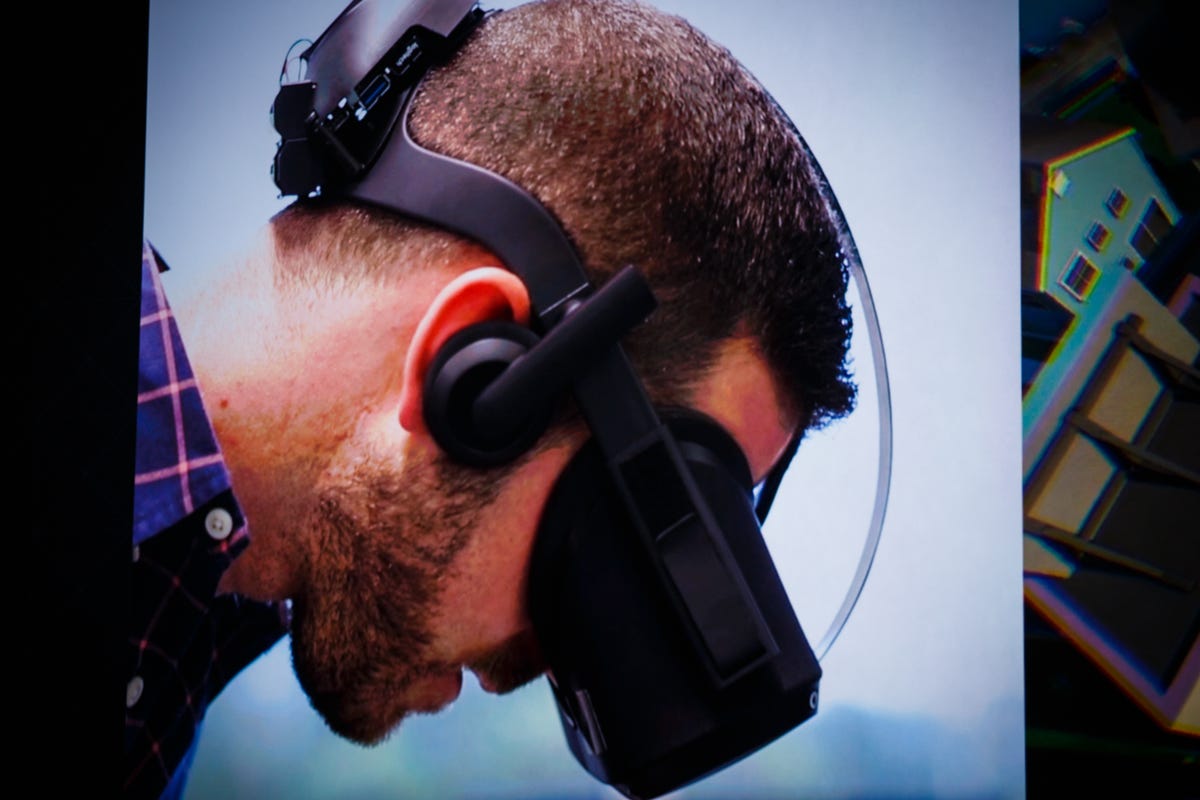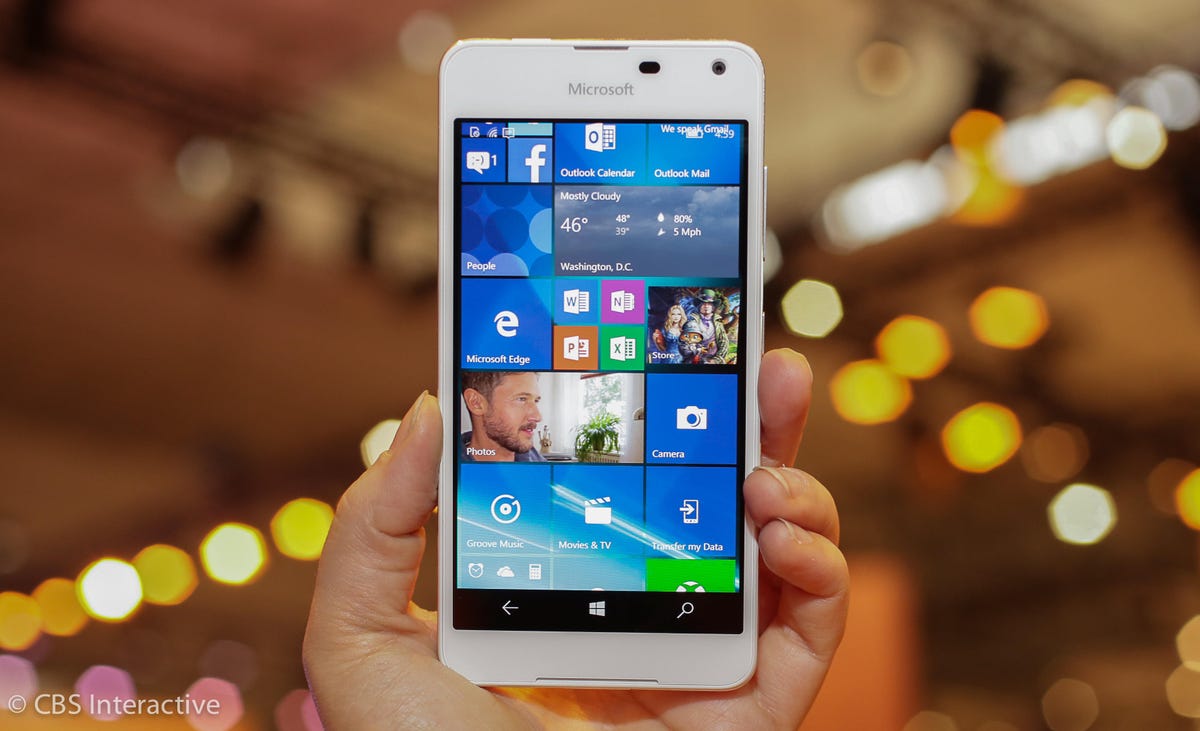If Microsoft could go back in time, I’ve a pretty good idea what would happen. CEO Satya Nadella would hand his younger self the code for Microsoft’s new Win32 on ARM emulator.
It’s the missing piece of the puzzle that could finally let Microsoft build Windows phones, razor-thin tablets and tiny laptops that people might actually want to buy. It could have maybe saved Microsoft billions of dollars and thousands of jobs, if the company had had it just a few years ago.
See, Win32 refers to the traditional Windows desktop apps you know and love, like Office and Photoshop, VLC and Steam. Thing is, the versions of Windows that ran on phones or thin tablets never could use those all-important Win32 apps — because the energy-efficient ARM processors that powered those devices weren’t compatible.


Would you rather have a thicker tablet, or a thinner, cheaper tablet that couldn’t run all your apps? That was the choice in 2012, but Microsoft didn’t make it clear.
Josh Lowensohn/CNET
It was actually quite the scandal back in 2012, when Microsoft tried to sell the first Microsoft Surface RT tablet with a stripped-down version of Windows — Windows RT — instead of the real thing. Microsoft lost nearly a billion dollars when the Surface RT didn’t sell, and nearly $8 billion more when it had to write off all its Nokia phones.
But this year, Microsoft says it’s finally cracked the code. On December 7, the company announced it would bring the full Windows 10 operating system, including Win32 apps, to ARM-based Qualcomm processors. That means real Windows desktop apps could run on phones — and beyond.
Is it too little too late? Here are five reasons why this single achievement could change the computing landscape — and three ways it could fail yet again.
Why Windows on ARM could succeed

 Enlarge Image
Enlarge ImageThe Surface Book is nearly an inch thick. (The Surface Pro 4 is a third of an inch — but the iPad is less than a quarter-inch thick.)
Sarah Tew/CNET
1) Windows tablets could trounce the iPad
The Surface Pro and Surface Book ($599 at Walmart) might be awesome Windows computers, but no one’s mistaking them for an Apple iPad — they’re comparatively thick, heavy and generally far more expensive. Meanwhile, Apple’s iPad still hasn’t quite gotten to the point where it can replace a computer for many people. (That’s probably why the Mac still exists.)
Microsoft’s Windows 10 OS has the chops to be for both a PC and a tablet, but few companies have managed to produce a competitive tablet using Intel processors. (The Samsung TabPro S is an exception to the rule.)
Qualcomm’s chips, with built-in wireless connectivity, could bring the battery life and always-on internet connection that Intel hasn’t up to now.
2) Windows phones could turn up the heat


HP’s Elite x3 turns into a Windows desktop when you dock it. It can even run Win32 desktop apps — if you pay for HP to host them on cloud servers.
Sarah Tew/CNET
Right now, Android and Apple are your only viable options for a smartphone, but that could change. Windows phones — ones that support all the traditional Windows apps, anyhow — might be attractive enough to pose a real alternative. What if your phone could turn into a full Windows desktop or laptop when you plug it into a dock?
It’s an idea that’s been tried before, but never with a Windows desktop that actually ran desktop apps on the phone itself. That’s now theoretically possible with Windows on ARM, and it’s something both PC makers and phone makers can now pursue.
If enough people buy into the idea, the mobile app developers that once skipped Windows Phone might give it another chance, too.
3) VR and AR
Windows is where the hottest virtual and augmented reality experiences live, but they’re not particularly portable. They’re all either tethered to Windows desktops or laptops, or have poor battery life (Microsoft HoloLens).
To cut the cord and venture out into the real world with smaller, standalone headsets, we need lightweight, always-connected-to-the-internet processors that last more than a few hours on a charge. That’s what Qualcomm’s ARM chips do best, by baking the cellular radios right into the processor instead of requiring additional components.
4) Laptops get cellular superpowers, too
How often do you wish your laptop had a cellular connection? Terrible coffee shop Wi-Fi could be a thing of the past with an ARM-powered Windows device. Today, you don’t see a lot of cellular-powered laptops because it’s a huge design constraint: Manufacturers have to make room for a removable cellular module and a SIM card tray, and install software to control the whole thing.
But again, Qualcomm’s chips have cellular built right in, and Microsoft says Windows will natively support tiny embedded reprogrammable SIM cards (eSIM) so there’s no need to swap out SIMs.
Of course, not every manufacturer will go to the trouble of adding cellular antennas, and you’ll still need a data plan, but you can probably expect cellular models to be way more affordable than the $150-$300 premium you might pay today. (Plus, prices might come down if Intel and Qualcomm are competing to be in your next PC.) With fast future 5G networks, there may come a time when cell connectivity is the norm for computers.


The Oculus Santa Cruz prototype. Facebook’s Oculus, Intel, Microsoft and Qualcomm all believe that standalone wireless VR headsets might be a new opportunity.
Josh Miller/CNET
5) ARM processors might be fast enough to rival Intel chips now
Sure, your phone isn’t anywhere near as fast as a beefy gaming PC packed with Intel, AMD and Nvidia processors — but you might be surprised how far mobile processors have come. In one benchmark, the ARM chip inside Apple’s new iPhone 7 actually beats the Intel ones inside Apple’s MacBook Air. The eight-core Qualcomm Snapdragon 835, the processor that Microsoft is targeting for this new Windows release, could be even more powerful.
Putting benchmarks aside, Microsoft showed off a Windows 10 machine running Adobe Photoshop on a quad-core Snapdragon 820, and you can bet that tomorrow’s eight-core Snapdragon 835 will be a good bit faster than that.
Why Microsoft could crash and burn yet again
1) Windows desktop apps could still be slow
Here’s the thing about Microsoft’s newfound app support: It uses an emulator, and emulators have a tendency to slow everything down. The emulator is a piece of software that lets your ARM-based Snapdragon chip pretend to be an Intel-like x86 processor, and every CPU cycle that maintains the disguise is one that’s not being used to actually run your app.
Which means that even if the Snapdragon 835 is just as fast as a comparable Intel chip, things will probably run a bit slower. We can’t say how much slower, and Microsoft has built some impressive emulators in the past — the Xbox One can now play Xbox 360 games thanks to the company’s work. And a Microsoft representative tells CNET that Windows on ARM is relatively fast: “People will experience apps at a similar speed to what they experience on other, similarly priced PCs.”
Still, “there is always an overhead associated with emulation,” Moor Insights and Strategy analyst Patrick Moorhead tells us — and also notes that emulators sometimes have difficulty supporting external devices like printers and scanners.


Sarah Tew/CNET
2) Who’s going to actually build a Windows phone?
Sure, Windows Phones could make meaningful competition for iPhone and Android — but who’s going to stick their necks out? Probably not Microsoft, whose phone ambitions got squashed when it had to part ways with Nokia. (We do still hear rumors about a Surface Phone, though.)
Laptops and tablets are one thing, but a bunch of companies got burned trying to support the last big batch of Windows Phones (and Windows RT tablets), including a couple that have since called the phone business quits (Nokia and Dell). Are any OEMs brave enough to wholeheartedly support Microsoft against Apple and Google this time around?
3) Customers might not trust Microsoft again
Microsoft is the proverbial boy who called wolf — year after year, the company promised you’d finally be able to get full Windows on a thin tablet or phone. Even if that’s about to become true, would you buy a Windows Phone or iPad-like device knowing how previous customers were left out in the cold?
Microsoft’s biggest fans who bought into Windows Phone found themselves unable to upgrade to newer versions of the operating system, and Microsoft did a pretty crappy job explaining to customers that Windows RT tablets wouldn’t run their desktop apps. If Microsoft comes out and says, “No, this time we really mean it, you can actually have a functional Windows desktop on a tiny device,” will customers believe it?
Qualcomm tells CNET the first such devices will go on sale late in 2017. I guess that’s when we’ll know for sure.



